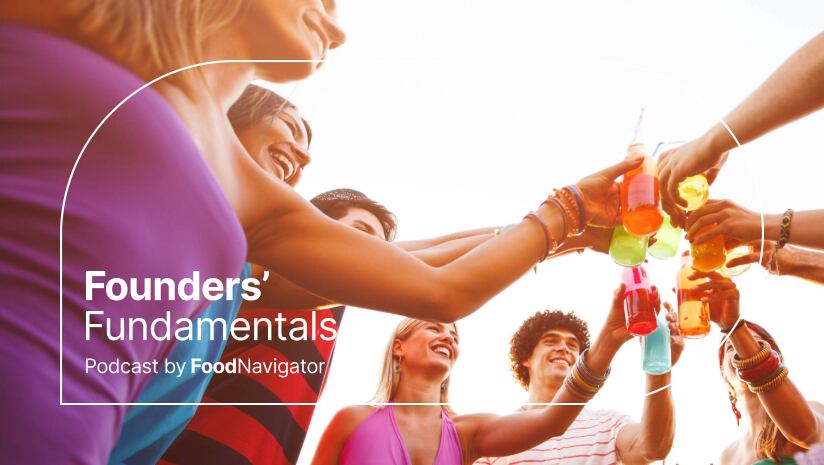Building a successful beverage brand is not just about developing a refreshing product or creating eye-catching branding, but it also comes down to a founder’s willingness to learn the intricacies of the drink business, according to beverage veteran Danny Stepper, CEO and co-founder of beverage company L.A. Libations.
Founders need to understand their metrics, including cost of goods, gross margins, etc., and focus on growing “an inch wide and a mile deep” before national ambitions, Stepper shared on the tenth episode of the Founders' Fundamentals podcast.
“You have to understand your pricing architecture, and you need to do it from day one because if you do not, you are going to stumble and fall and potentially ruin your company,” Stepper said.
Two traits of iconic founders and two paths to disrupt an industry
From his years of beverage experience, Stepper helped launch iconic brands like Body Armor, Core Water, Athletic Brewing, Chamberlain Coffee and others. Founders who developed household brands often had two contradictory traits, he noted.
First, a founder must have “a reason to be” and bring to market innovation that actually meets the needs of consumers, Stepper said. Second, a founder must be “coachable” and willing to learn about the intricacies of the beverage business and change their tactics to win in the market, he added.
FoodNavigator-USA's podcast for CPG startups
The Founders' Fundamentals podcast is FoodNavigator-USA’s bi-weekly podcast series, dedicated to the art of building and growing CPG food and beverage brands. View below for a list of recent episodes:
- VC funding 101: Habitat Partners discusses strategies to secure capital
- What CPG startups must know about debt financing in 2025
- Startup CPG, Emil Capital Partners, SPINS share tips for success in 2025
- Karen Anderson on identifying, capitalizing on whitespace innovation
- Christy Lebor of SmashBrand discusses ‘the head and the heart’ of brand strategy
“People who are really innovative are not really coachable, and people who are really coachable are not that innovative,” Stepper admitted.
Similarly, founders typically travel down one of two paths to disrupt the beverage industry, Stepper noted. A founder can either create an entirely new category, like coconut water was in the US decades ago, or disrupt “a big existing category with a better-for-you version,” he added.
Body Armor launched as a better-for-you sports drink without artificial colors or sweeteners and the tagline “Upgrade your sports drink,” Stepper noted. Body Armor was “a 10-year overnight success story” that eventually sold to Coca-Cola for $8 billion.
The duality of VC funding: Can a founder focus on growth and profitability?
Beverage founders often need to raise money either through venture capital (VC) funding or traditional debt to support the growth of their brand, Stepper said. Focusing on securing funds and loans from friends and family, family office and high net-worth individuals (i.e., angel investors) is often the best course of action given the challenging VC landscape, he said.
Over the last several years, VC funding dried up in the beverage space as investors searched for safer investment opportunities, including leaving the money in the bank and taking advantage of high interest rates, Stepper said.
Additionally, many VC investors are prioritizing both growth and profitability – often measured by the earnings before interest, taxes, depreciation and amortization (EBITDA) rate – which is hard to obtain in the beverage industry, he added.
However, managing the balance between profitability and growth is very challenging as often capital is needed to grow and scale a brand, so few companies match investors' demands for both profitability and growth, Stepper explained. Also. beverage companies need capital to expand manufacturing capacity and promote their brand, which often impact profitability, he added.
“What is very challenging to navigate is the fundamental shift that has happened over the last three years, where three years ago — and for the 20 years before that — it was all about growing the top line. It was not about making money. It was about growth. And then you grow it and hope to sell it to a strategic and there have been some incredible examples of that. But there has now been a shift to investors wanting EBITDA. Investors want growth and EBITDA. Well, here is a deep, dark secret — there is no such thing,” Stepper elaborated.
‘Your co-packer situation is going to evolve with your brand’
Securing a co-manufacturer (i.e., co-packer) is often a key challenge, which require startups to fill a minimum order quantity. However, “your co-packer situation is going to evolve with your brand” as a brand gains market traction, Stepper noted.
While few brands (2%) reach the stage where they open their own facility, founders have a couple of options when it comes to expanding their capacity when they grow to a certain point, Stepper explained.
“It is not necessarily a light switch where you are using co-packers and then jump to your own manufacturing. There are instances where you could buy a line inside an existing co-packer, and that line time is yours and you can manage it how you want to or even sell the time,” Stepper elaborated.





